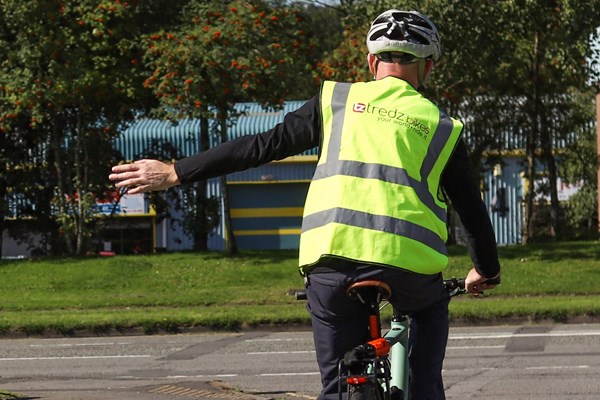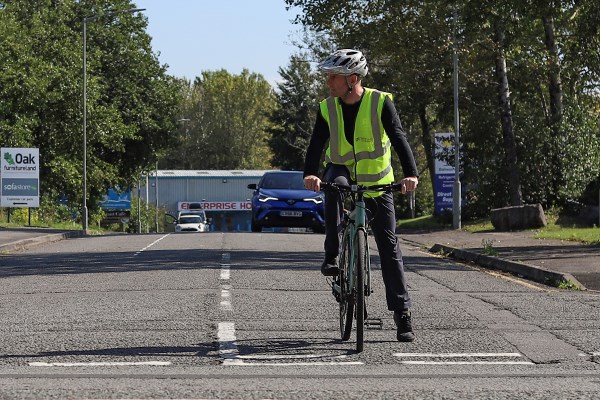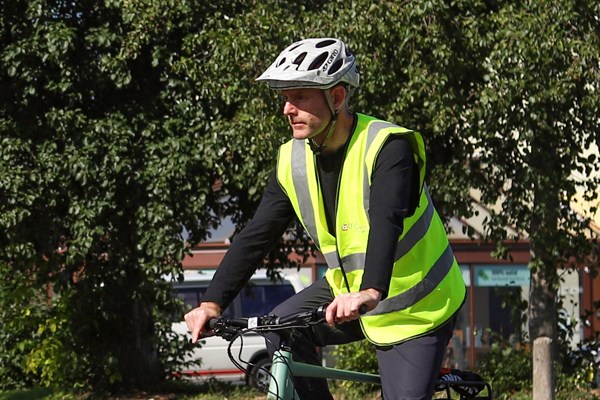When riding on busy roads there are a few things that every cyclist can do to make their journey safer. In this safe cycling guide, we’ll look at all the things that you can do to make your journey by bike safer. This includes using your road positioning and communicating with other road users as well as looking all around you and making sure that you can be seen on the road.
These bike safety tips are based on the National Standard for Cycle Training which offers the best cycle safety advice for riding on UK roads. The manoeuvres shown here are compatible with Bike Ability cycle training.

Looking ahead and all around you is an important aspect of cycling safely. Seeing what’s ahead of you will help you to negotiate roads safely and responsibly. If you anticipate junctions and hazards ahead then you can respond in the safest way. This will help you to choose the best road positioning as you approach and negotiate it appropriately.?
As well as observing your surroundings, you need to make sure that you can be seen by other road users. Road positioning can make a big difference as drivers tend to have a relatively narrow view of the road ahead. This is why road positioning is especially important when negotiating road junctions. We’ll look into this in more detail below.

Wearing appropriate clothing and using lights is another important way to help yourself to be seen on the road. See our Hi-Viz and Reflective clothing guides for more on cycle clothing and our bike lights guide to find out more about after-dark illumination.
Road positioning is one of the most important skills a cyclist can learn. This is because cyclists exert the greatest influence on their safety by their positioning on the road. Good road positioning will help you to be seen by other road users and discourages drivers from passing you unsafely. There are two basic road positions that all cyclists should be aware of:
The primary position - the centre of the traffic lane
The primary riding position is in the centre of the traffic lane. Here you will be most visible to following drivers as well as those who might cross your path. You will also have the best two-way visibility of side roads and road features.
Using the primary cycling position to show your presence to traffic ahead and prevent following drivers from overtaking is especially important when negotiating road junctions. The primary position is also useful when cycling on narrow winding roads and when traffic calming schemes narrow the road making overtaking unsafe.
 The Primary position should be your normal riding position when:
The Primary position should be your normal riding position when:
- You can keep up with the traffic
- You need to emphasise your presence to traffic ahead
- You need to prevent following drivers from passing you unsafely
The secondary position - to the left of the traffic lane
The secondary cycling position is to the left of the moving traffic lane. On a wide road this will be about 1 metre (3feet) from the kerb (or from the left-most part of the moving traffic lane) but no more than 0.5 metres (1.5 feet) even on a narrow road. This will give you room to manoeuvre if you need to and will also keep you away from drain covers and the debris that tends to collect at the side of the road.
Use the secondary position whenever there is a following vehicle and it is safe for them to pass you. On busy roads, this means that you will be cycling in the secondary position most of the time. You can move back into the primary position whenever it is unsafe for vehicles to overtake you or when you need to emphasise your position to traffic ahead.
 Use the secondary position when:
Use the secondary position when:
- It is safe for following vehicles to pass.
The secondary road position should always relate to the moving traffic lane rather than the edge of the road.
The moving traffic lane
Traffic doesn’t always stick to the lane markings on the road. Sometimes obstacles on the road, like parked cars and traffic cones, will force vehicles to move outside the lane. As vehicles move the traffic lane moves with it. This is the moving traffic lane.
On a clear road, the moving traffic lane will stay between the lines on the road. This changes whenever vehicles have to move around an obstacle in the road. The moving traffic lane relates to the path that vehicles take on the road rather than the lane markings on the road.
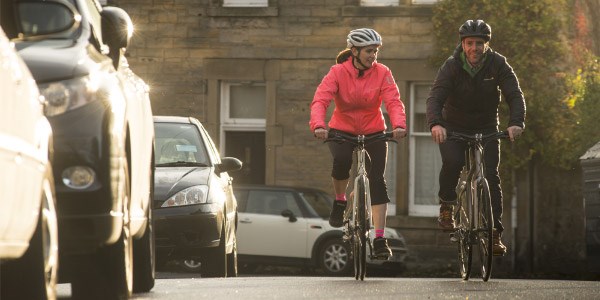
When cycling your road positioning should always relate to the moving traffic lane rather than the kerbside or the lines on the road. Riding further left outside the moving traffic lane will reduce your ability to be seen by other road users. As a cyclist, it is always safer to be seen.
There are a few safe cycling tips that will help you to ride on the road more safely. This is most important when cycling past obstacles and when negotiating road junctions.
Adopting a systematic routine that includes making frequent observations and correct road positioning is best when you cycle through junctions. Looking ahead to anticipate what is ahead of you is important as it will give you more time to move safely. Good road positioning makes you more visible and gives you more control over those around you.
We look at the safest routines to ride through specific road junctions in more detail below. Here are some points that are common to all of them:
- Looking ahead to anticipate hazards
- Looking behind for following vehicles
- Communicating your intentions to other road users
- Choosing the safest road positioning as you cycle

Cycling manoeuvres on the road and at junctions
To help you ride more safely on the road we’ve put together a series of step by step guides. We look at specific cycling manoeuvres showing road safety techniques based on the National Standard for Cycle Training. These manoeuvres are compatible with Bike Ability courses.
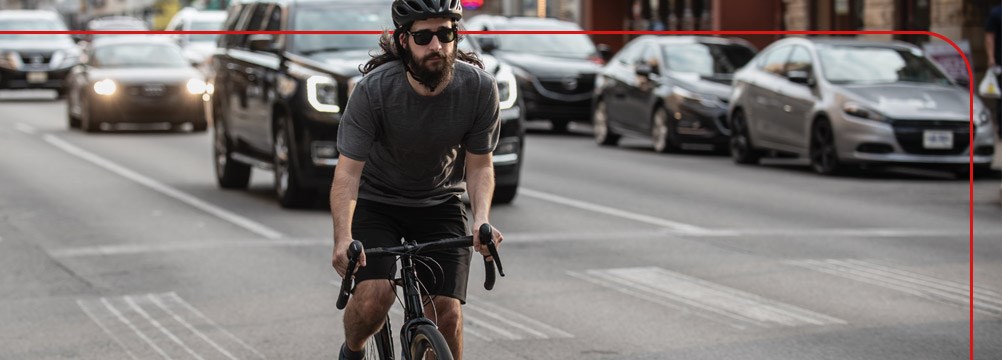
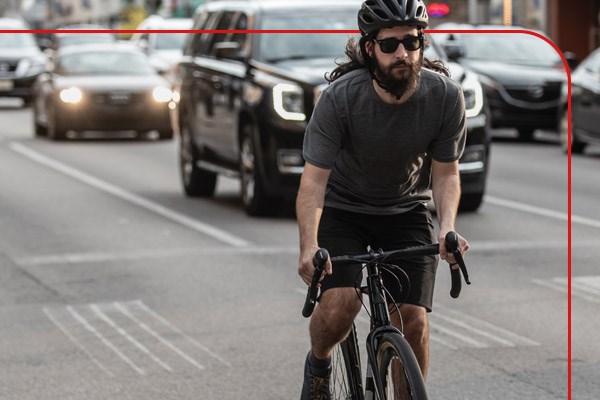
 See and be seen -
See and be seen - 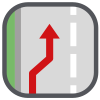 Understanding road positioning
Understanding road positioning
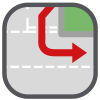 Negotiating roads and junctions
Negotiating roads and junctions

